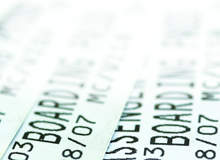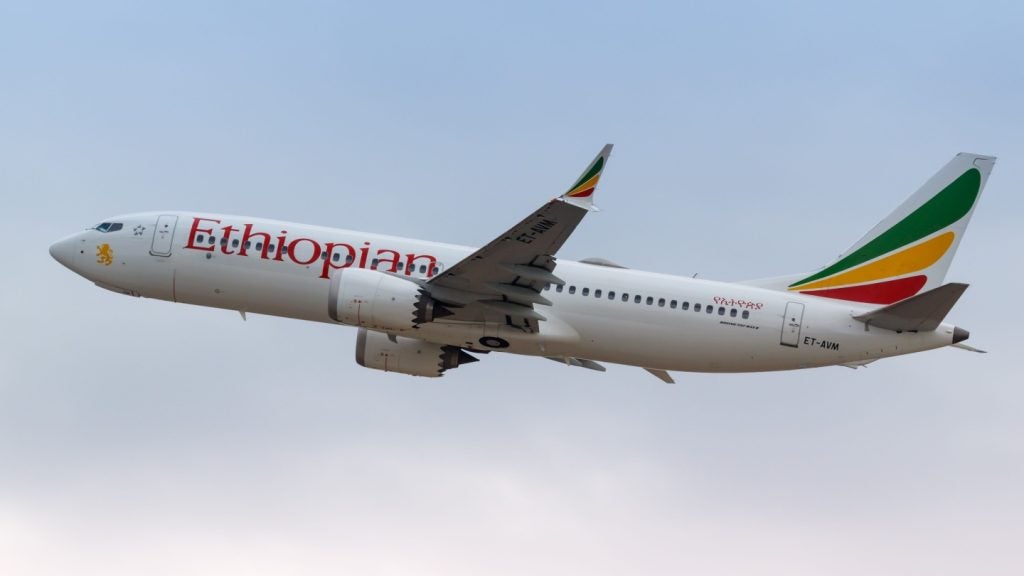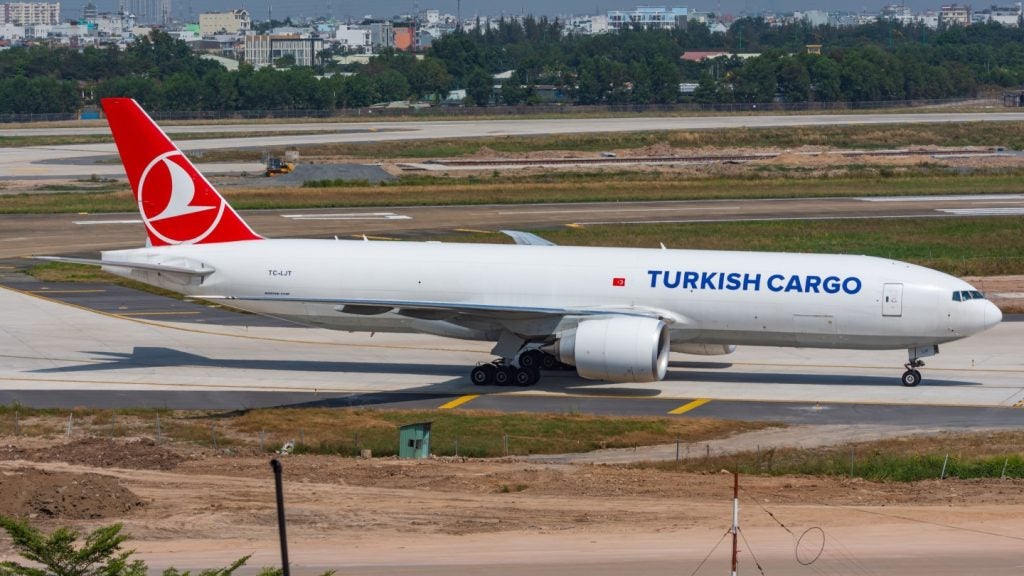
Airlines and airports want to improve the flow of passengers from check-in to boarding. Both are keen to remove steps from the process, and the result is the automation of as many stages as possible to improve the quality of the passenger experience.
Self-service check-in kiosks are widespread and many passengers download boarding passes from the internet and print them at home. There have also been efforts to implement paperless boarding as automated passenger technology recognition improves. This state-of-the-art technology uses 2D barcodes that can be read from the screen of a mobile phone. As long as a passenger has a phone with a large enough screen and power in the battery, it is possible to eliminate the need to print a boarding pass. Enter near field communication (NFC), a technology that makes contactless boarding possible for even more passengers.
NFC-enabled phones can store electronic boarding passes that are read using a short-range, wireless connectivity technology. The advantage over 2D barcode mobile boarding passes is that NFC-enabled phones could be switched off or out of battery power, yet still communicate with the reader at the gate. The Pass and Fly pilot project, backed by Nice Airport, Air France, Amadeus and IER, proves the accuracy, efficiency and reliability of the technology.
“NFC will replace barcodes,” says Yannick Beunardeau, director, airport solutions for technology developer Amadeus. “They need no screen, no battery power and there is no machine to plug in, but boarding passes are still recognised. The technology has proven itself in many other transport and hospitality applications, including in hotels and for boarding trains. It works in mass transport.”
Laurent Lapetitmangin, Air France’s airport services director, agrees that NFC shows great promise.
“We are keen to try new features, particularly in mobile services,” he says. “We have already launched SMS and mobile check-in. We use 2D barcodes on phones as boarding passes, but NFC allows a richer interaction between the passenger, the airline and the airport. It allows fast recognition of our clients.”
How well do you really know your competitors?
Access the most comprehensive Company Profiles on the market, powered by GlobalData. Save hours of research. Gain competitive edge.

Thank you!
Your download email will arrive shortly
Not ready to buy yet? Download a free sample
We are confident about the unique quality of our Company Profiles. However, we want you to make the most beneficial decision for your business, so we offer a free sample that you can download by submitting the below form
By GlobalDataNFC incorporates wireless technology into mobile phones, allowing interaction among electronic devices. This means passengers can be identified and obtain a digital boarding pass by swiping their mobile phone across a reader in the airport.
IER, a subsidiary of the Bolloré Group, is a leading supplier of ticket printers and gate readers to major transportation networks for secure passenger and baggage check-in and processing. It has developed hardware for uploading boarding passes to phones and reading them at the gate. As printing needs have declined, IER has focused on RFID schemes, but Pass and Fly is its first NFC project.
“RFID systems for access to planes are similar to those used in ground transport applications, and soon they won’t be dependent on the model or screen size of a phone,” says IER marketing and strategy vice-president Alexis Hernot. “Everything will be seamless, so boarding will be easy.”
Test project
The new Pass and Fly boarding device is being piloted between April and October 2009 by members of Nice Airport’s passenger programme Club Airport Premier (CAP) and Air France’s frequent flyer programme on the Nice-Paris Orly domestic route. The technology will simplify passenger recognition and credit CAP points through NFC-enabled mobile phones.
“Members of Club Airport Premier previously had to credit their CAP points at terminals situated after the security inspection point,” explains Agnès Henry Scalliet, Grand Riviera department manager for Nice Côte d’Azur Airport. “With Pass & Fly, the crediting of CAP points and airplane boarding are done at one time and in one place.”
The test programme uses technology applications developed by Amadeus for mobile phones, departure control systems and airport readers to display information relevant to the boarding process. IER’s NFC booths and readers are integrated in the airport’s infrastructure and connected to Air France’s passenger management system.
With NFC, travellers can check in through any channel – internet, mobile phone or self-service kiosk – and board the plane using an NFC-enabled phone holding their frequent flyer information. They can use fast-lane access to security inspection by swiping their phone on the Pass and Fly reader, which identifies each passenger and uploads a digital boarding pass following the IATA format.
Nice Airport CAP frequent flyer points are automatically credited, eliminating the need to visit a separate kiosk. At security inspection, passengers swipe their phone across a second NFC reader that displays their boarding pass to the security staff. There is no need to display their mobile phone screen. At the boarding gate, airline staff need only check passengers’ identification documents, while the NFC reader checks the boarding pass and prints a coupon with the seat information.
“NFC is not complicated,” says Beunardeau. “You need a device to read and a device to be read. NFC will be embedded in more phones in the future, or we can add a chip to the back of older phones. It has so many applications that it makes sense to use it and it is more secure than paper boarding passes.”
So far, the market for NFC-enabled phones is small. Passengers with BlackBerry PDAs, iPhones or Nokia N-Series handsets could use Pass and Fly, but future generations of phones will come with NFC capability.
“There is benefit for everyone in removing paper and so far the technology is working perfectly,” says Hernot. “It is not revolutionary, but we are using existing technology in a clever way. There are not enough handsets now but NFC will become widespread. Self-scanning is new, but soon over 50% of passengers will have NFC-enabled phones.”
The 50 passengers piloting the technology testify to its reliability and robustness. There may be only one pilot programme on a single route and one airline so far, but the likelihood of many more test projects beginning next year is strong.
“Check-in costs are a key driver in this economic climate,” Hernot adds. “The technology can be implemented quickly. Infrastructure is minimal, as we just add a reader at the gate. The biggest change is in processes – ensuring staff know what to do.”
Collaboration and consensus
The technology behind Pass and Fly, which is DCS agnostic and can scale up to any airport or airline in the world, is the key focus of the project. It will depend partly on the proliferation of NFC technology in future generations of mobile phones, but there is little doubt that it will set the tone for automated passenger recognition and contactless boarding.
There’s another equally important lesson: the Pass and Fly project would be nothing without the high level of openness and collaboration between all four partners, but especially between Air France and Nice Côte d’Azur Airport.
The sharing of data between airports and airlines is outside the norm but benefits the loyalty programmes of both. An open approach to information sharing enables electronic boarding passes to be linked to departure control systems and customer relationship management systems. The results have been welcomed by all parties.
“The project was appealing because it is the first time there has been an IT collaboration between an airline and an airport,” explains Petitmangin. “Airlines have been afraid to share data with airports, but the future lies in greater data exchange to offer passengers a smoother journey through the airport. We knew that our data would benefit Nice Airport’s loyalty programme, so we could have been reluctant to do it, as we usually only promote our own Flying Blue loyalty scheme. But now passengers can benefit from both loyalty programmes.”
With Amadeus the main broker between airline and airport, the project has shown the value not only of investing in new technology, but also of embracing a collaborative approach to automation. NFC technology has big potential in the aviation industry, but it will be realised only if such collaboration becomes the norm rather than the exception.







